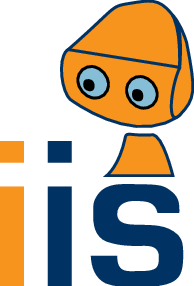research:projects
Differences
This shows you the differences between two versions of the page.
| Both sides previous revision Previous revision Next revision | Previous revision Next revision Both sides next revision | ||
|
research:projects [2014/03/28 08:31] c7031007 |
research:projects [2017/11/03 09:59] c7031007 |
||
|---|---|---|---|
| Line 1: | Line 1: | ||
| ====== Externally-Funded, Collaborative Projects ====== | ====== Externally-Funded, Collaborative Projects ====== | ||
| - | ===== Current EU Projects ===== | + | ===== Current Projects ===== |
| + | |||
| + | [[https://www.profactor.at/en/research/industrial-assistive-systems/roboticassistance/projects/flexrop/|FlexRoP - Flexible, assistive robot for customized production]] (FFG (Austria) ICT of the Future, 2016-2018): Production of mass customized products is not easy to automate since objects and object positions remain more uncertain compared to mass production scenarios. Uncertainty handling motivates the application of advanced sensor-based control strategies which increases system complexity of robot applications dramatically. A possible solution to this conflict is the concept of task level or skill based programming that will render modern robot systems. Such systems can be applied without safety fence, are easier to program, more applicable and transformable into capable robot assistants. The project will implement a skill based programming framework and will apply it on selected industrial demo scenarios and evaluate research results. The main focus of the project is the application of methods to acquire process information by worker monitoring and thus make the robot assistants self-learning. | ||
| - | [[http://www.squirrel-project.eu/|SQUIRREL]] (EU FP7-ICT-STREP, 2014-2018): Clutter in an open world is a challenge for many aspects of robotic systems, especially for autonomous robots deployed in unstructured domestic settings, affecting navigation, manipulation, vision, human robot interaction and planning. SQUIRREL addresses these issues by actively controlling clutter and incrementally learning to extend the robot's capabilities while doing so. We term this the B3 (bit by bit) approach, as the robot tackles clutter one bit at a time and also extends its knowledge continuously as new bits of information become available. SQUIRREL is inspired by a user driven scenario, that exhibits all the rich complexity required to convincingly drive research, but allows tractable solutions with high potential for exploitation. We propose a toy cleaning scenario, where a robot learns to collect toys scattered in loose clumps or tangled heaps on the floor in a child's room, and to stow them in designated target locations. | ||
| <html> | <html> | ||
| <div style="clear:both"><br></div> | <div style="clear:both"><br></div> | ||
| </html> | </html> | ||
| + | |||
| + | {{:research:imagine-transparent.png?nolink&200 ||}}[[https://www.imagine-h2020.eu|IMAGINE - Robots Understanding Their Actions by Imagining Their Effects ]] (EU H2020, 2017-2020): seeks to enable robots to understand the structure of their environment and how it is affected by its actions. “Understanding” here means the ability of the robot (a) to determine the applicability of an action along with parameters to achieve the desired effect, and (b) to discern to what extent an action succeeded, and to infer possible causes of failure and generate recovery actions. | ||
| + | |||
| + | <html> | ||
| + | <div style="clear:both"><br></div> | ||
| + | </html> | ||
| + | |||
| + | {{:research:squirrel.png?nolink&200 |}}[[http://www.squirrel-project.eu/|SQUIRREL]] (EU FP7-ICT-STREP, 2014-2018): Clutter in an open world is a challenge for many aspects of robotic systems, especially for autonomous robots deployed in unstructured domestic settings, affecting navigation, manipulation, vision, human robot interaction and planning. SQUIRREL addresses these issues by actively controlling clutter and incrementally learning to extend the robot's capabilities while doing so. We term this the B3 (bit by bit) approach, as the robot tackles clutter one bit at a time and also extends its knowledge continuously as new bits of information become available. SQUIRREL is inspired by a user driven scenario, that exhibits all the rich complexity required to convincingly drive research, but allows tractable solutions with high potential for exploitation. We propose a toy cleaning scenario, where a robot learns to collect toys scattered in loose clumps or tangled heaps on the floor in a child's room, and to stow them in designated target locations. | ||
| + | |||
| + | <html> | ||
| + | <div style="clear:both"><br></div> | ||
| + | </html> | ||
| + | |||
| + | |||
| + | ===== Completed Projects (Selection) ===== | ||
| {{:research:3rdhand.png?nolink&110 |3rdHand}} | {{:research:3rdhand.png?nolink&110 |3rdHand}} | ||
| Line 26: | Line 42: | ||
| - | ===== Completed Projects (Selection) ===== | + | {{:research:intellact.png?nolink&110 |IntellAct}} [[http://intellact.sdu.dk/|IntellAct]] (EU FP7-ICT-STREP, 2011-2014) addresses the problem of understanding and exploiting the meaning (semantics) of manipulations in terms of objects, actions and their consequences for reproducing human actions with machines. This is in particular required for the interaction between humans and robots in which the robot has to understand the human action and then to transfer it to its own embodiment. |
| - | + | ||
| - | {{:research:intellact.png?nolink&110 |IntellAct}} [[http://www.intellact.eu/|IntellAct]] (EU FP7-ICT-STREP, 2011-2014) addresses the problem of understanding and exploiting the meaning (semantics) of manipulations in terms of objects, actions and their consequences for reproducing human actions with machines. This is in particular required for the interaction between humans and robots in which the robot has to understand the human action and then to transfer it to its own embodiment. | + | |
| <html> | <html> | ||
research/projects.txt · Last modified: 2024/02/19 12:24 by Antonio Rodriguez-Sanchez

